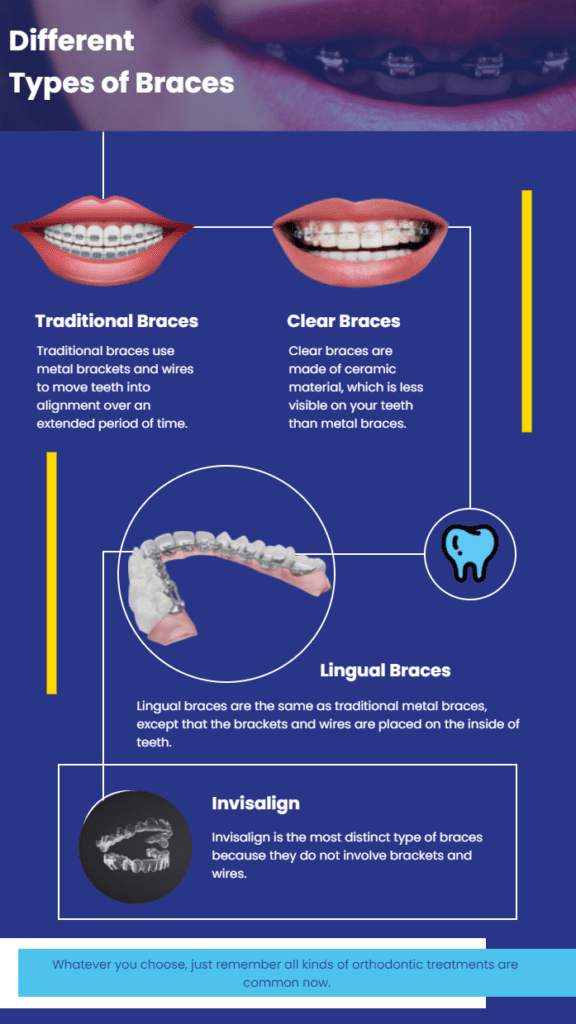Comprehensive Guide to Orthodontics Procedures for Correcting Dental Misalignments
Understanding the complexities of each treatment, including their systems, benefits, and possible downsides, is crucial in making informed decisions about one's orthodontic treatment. As we navigate through the comprehensive guide to orthodontic procedures for correcting dental misalignments, the elaborate details of each method will unravel, losing light on the course towards a unified and practical oral alignment.
Orthodontic Procedures Summary

Regular modifications and surveillance are important components of orthodontic therapy to guarantee development is on track and to make any kind of necessary adjustments along the means. By undergoing orthodontic procedures, individuals can not only accomplish a straighter grin yet also enhance their total dental health and function.
Typical Braces: Just How They Work
When considering orthodontic treatments for oral misalignments, conventional dental braces stand out as a tried and true method for dealing with teeth positioning. Standard dental braces are composed of brackets, cords, and bands that work with each other to use continual pressure on the teeth, gradually moving them into the desired positioning.
One key facet of how typical braces job is the process of bone improvement. As pressure is related to the teeth through the braces, the bone bordering the teeth is reshaped to support the brand-new tooth positions. This renovation is important for the lasting stability of the remedied placement. Clients will certainly require regular changes at the orthodontist's workplace to guarantee the dental braces proceed to apply the right stress for efficient teeth activity.
Invisible Aligners: Disadvantages and pros
These clear, customized trays are virtually invisible when put on, making them an appealing option for people looking for a much more aesthetically pleasing orthodontic treatment. People can eliminate the aligners before consuming or brushing their teeth, reducing the risk of food obtaining stuck in the home appliance and simplifying the cleaning procedure.

Surgical Orthodontic Options
Surgical interventions in orthodontics existing practical options for resolving complicated oral misalignments that might not be successfully dealt with with conventional orthodontic therapies. While traditional braces and unseen aligners can remedy numerous orthodontic concerns, certain instances require surgical intervention to achieve ideal outcomes. Surgical orthodontic choices are commonly recommended for severe malocclusions, significant jaw inconsistencies, and cases where the underlying bone framework needs adjustment to accomplish proper alignment.
One common medical orthodontic procedure is orthognathic surgery, which includes rearranging the jaws to deal with useful concerns such as problem chewing or speaking. This surgical treatment is commonly done in partnership with an orthodontist who helps align the teeth prior to and after the treatment. Surgical orthodontics may also involve treatments to reveal affected teeth, remove excess gum tissue, or reshape the jawbone to produce a more harmonious facial profile.
Before thinking about medical orthodontic options, patients go through a thorough analysis to figure out the requirement and prospective advantages of such interventions. invisalign. While surgical procedure may seem complicated, it can significantly enhance both the function and visual appeals of the smile in situations where traditional orthodontic treatments fall short
Retainers and Post-Treatment Care

Failing to conform with post-treatment treatment instructions can result in relapse, where the teeth progressively move back in the direction of their original settings. Consistent retainer wear, great oral hygiene, and routine oral check-ups are important for preserving the results accomplished via orthodontic surgery and ensuring the long-lasting security of the corrected oral alignment.
Conclusion
Finally, orthodontic procedures provide various alternatives for remedying dental imbalances. Conventional braces use steel braces and wires to shift teeth right into appropriate placement. Undetectable aligners provide an even more discreet alternative but may not appropriate for all situations. Surgical orthodontic alternatives are offered for extra severe imbalances. Retainers are commonly used post-treatment to keep the brand-new placement. Generally, orthodontic treatments can successfully enhance dental health and aesthetic appearance.
As we browse with my link the detailed overview to orthodontic treatments for dealing with oral imbalances, the detailed details of each technique will unfold, dropping light on the path towards a unified and functional oral positioning. - braces
One of the most typical orthodontic therapies is the usage of dental braces, which are composed of steel brackets and cables that use gentle pressure to slowly shift teeth into the preferred placement.When taking into consideration orthodontic therapies for dental misalignments, standard our website braces stand out as a time-tested technique for fixing teeth placing. Furthermore, undetectable aligners might not be appropriate for intricate orthodontic concerns that require even more significant teeth motion, as they are commonly recommended for mild to modest cases. Retainers are personalized orthodontic tools created to hold teeth in their fixed settings after the completion of orthodontic therapy.